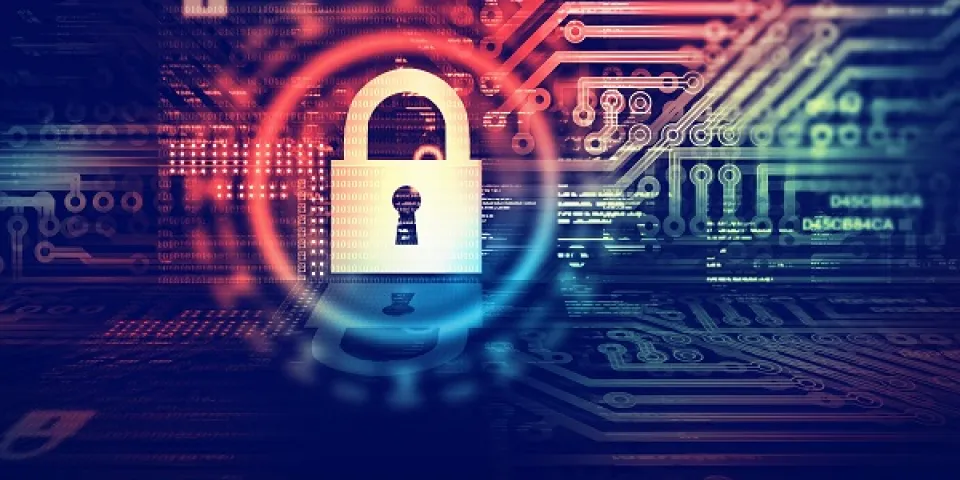Data Cyber Security: A Comprehensive Approach to Mitigating Digital Risks
Data Cyber Security: A Comprehensive Approach to Mitigating Digital Risks
Blog Article
Just How Data and Network Protection Secures Against Arising Cyber Threats
In an era noted by the fast advancement of cyber hazards, the value of information and network protection has never ever been more obvious. Organizations are significantly reliant on sophisticated security procedures such as file encryption, accessibility controls, and proactive tracking to secure their digital assets. As these dangers become extra intricate, understanding the interplay in between information safety and network defenses is important for mitigating threats. This conversation aims to check out the vital parts that strengthen a company's cybersecurity position and the strategies essential to stay in advance of prospective susceptabilities. What stays to be seen, however, is just how these procedures will certainly develop despite future challenges.
Understanding Cyber Risks

The ever-evolving nature of technology continually introduces new vulnerabilities, making it important for stakeholders to stay vigilant. People may unknowingly succumb social design methods, where assaulters control them right into disclosing sensitive information. Organizations face special difficulties, as cybercriminals typically target them to manipulate useful information or interfere with operations.
Furthermore, the rise of the Net of Points (IoT) has actually increased the assault surface, as interconnected devices can act as entry points for enemies. Recognizing the value of durable cybersecurity methods is essential for mitigating these dangers. By promoting a detailed understanding of cyber people, organizations and dangers can apply effective strategies to safeguard their electronic properties, making certain resilience when faced with a significantly intricate danger landscape.
Secret Components of Information Protection
Making sure information safety and security requires a complex technique that includes numerous vital components. One fundamental component is information file encryption, which transforms delicate info into an unreadable style, easily accessible only to licensed users with the proper decryption secrets. This acts as an essential line of defense versus unauthorized gain access to.
Another vital component is access control, which manages who can watch or adjust information. By applying strict individual authentication methods and role-based access controls, organizations can decrease the threat of expert hazards and data violations.

Additionally, data masking strategies can be used to safeguard sensitive information while still enabling for its use in non-production atmospheres, such as testing and development. fft perimeter intrusion solutions.
Network Protection Approaches
Applying robust network security strategies is important for protecting an organization's digital infrastructure. These approaches entail a multi-layered technique that consists of both hardware and software program options developed to safeguard the honesty, privacy, and availability of data.
One vital component of network safety is the release of firewall programs, which work as a barrier in between trusted interior networks and untrusted exterior networks. Firewall programs can be hardware-based, software-based, or a mix of both, and they assist filter incoming and outward bound website traffic based upon predefined protection rules.
Additionally, breach detection and prevention systems (IDPS) play a crucial function in keeping track of network website traffic for suspicious activities. These systems can notify managers to potential violations and do something about it to reduce threats in real-time. Frequently patching and my website upgrading software program is also crucial, as vulnerabilities can be manipulated by cybercriminals.
Additionally, carrying out Virtual Private Networks (VPNs) makes certain safe remote accessibility, securing information sent over public networks. Segmenting networks can minimize the assault surface and include prospective breaches, limiting their effect on the general facilities. By taking on these strategies, organizations can properly strengthen their networks against arising cyber dangers.
Finest Practices for Organizations
Establishing ideal techniques for organizations is critical in keeping a solid safety and security stance. A comprehensive approach to information and network safety starts with normal danger evaluations to recognize vulnerabilities and potential threats. Organizations needs to carry out durable gain access to controls, making sure that just licensed personnel can access sensitive information and systems. Multi-factor verification (MFA) ought to be a standard need to enhance safety layers.
Additionally, continual employee training and understanding programs are vital. Employees need to be educated on identifying phishing efforts, social engineering strategies, and the importance of adhering to protection protocols. Routine updates and patch monitoring for software program and systems are additionally important to shield versus understood susceptabilities.
Organizations need to check and establish case action intends to make sure preparedness for prospective violations. This includes developing clear communication channels and roles during a safety and security occurrence. Additionally, data encryption need to be employed both at remainder and en route to secure delicate information.
Finally, performing routine audits and compliance checks will aid make certain adherence to appropriate laws and well established policies - fft perimeter intrusion solutions. By complying with these ideal practices, organizations can significantly improve their strength versus arising cyber dangers and safeguard their important assets
Future Trends in Cybersecurity
As companies navigate a significantly complicated electronic landscape, the future of cybersecurity is positioned to progress dramatically, driven by moving and emerging modern technologies threat paradigms. One famous trend is the integration of expert system (AI) and device knowing (ML) right into safety structures, permitting real-time threat detection and feedback automation. These technologies can analyze vast quantities of information to recognize anomalies and potential breaches extra successfully than typical approaches.
An additional vital fad is the surge of zero-trust architecture, which needs continual verification of individual identities and tool safety, no matter their place. This strategy reduces the danger of expert threats and boosts protection versus exterior assaults.
Furthermore, the increasing fostering of cloud solutions requires robust cloud safety and security techniques that deal with special vulnerabilities related to cloud settings. As remote job comes to be a permanent fixture, securing endpoints will certainly likewise come to be try here critical, resulting in an elevated concentrate on endpoint discovery and action (EDR) services.
Finally, governing conformity will continue to form cybersecurity practices, pushing organizations to take on extra strict information security steps. Welcoming these trends will certainly be crucial for companies to fortify their defenses and navigate the evolving landscape of cyber dangers effectively.
Conclusion
Finally, the application of robust data and network safety and security steps is essential for organizations to guard versus emerging cyber dangers. By using encryption, gain access to control, and effective network safety and look at more info security techniques, companies can significantly minimize vulnerabilities and safeguard sensitive details. Adopting finest techniques better improves strength, preparing companies to face developing cyber obstacles. As cybersecurity continues to progress, staying educated regarding future patterns will certainly be essential in preserving a solid protection against potential risks.
In a period marked by the rapid evolution of cyber dangers, the importance of data and network safety has never been more pronounced. As these dangers become much more intricate, recognizing the interaction between data safety and network defenses is crucial for mitigating dangers. Cyber hazards incorporate a large array of destructive tasks aimed at jeopardizing the confidentiality, integrity, and accessibility of networks and information. A comprehensive approach to data and network protection starts with routine danger evaluations to identify susceptabilities and possible dangers.In final thought, the execution of robust data and network security steps is essential for organizations to secure versus emerging cyber hazards.
Report this page